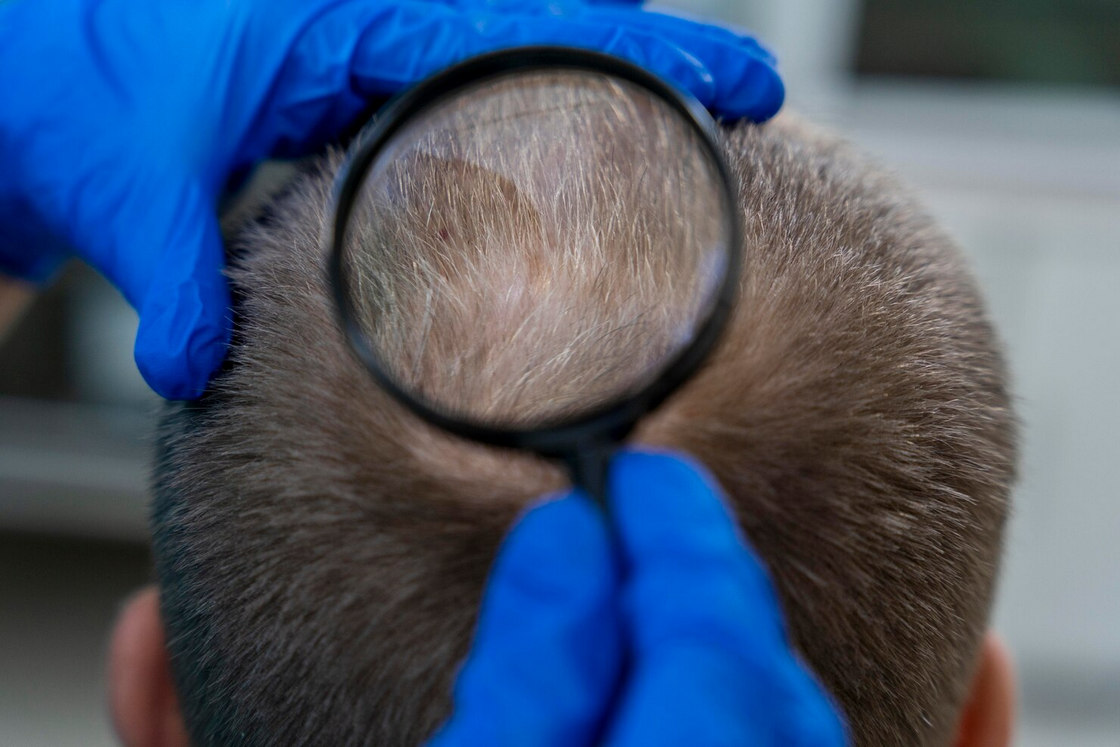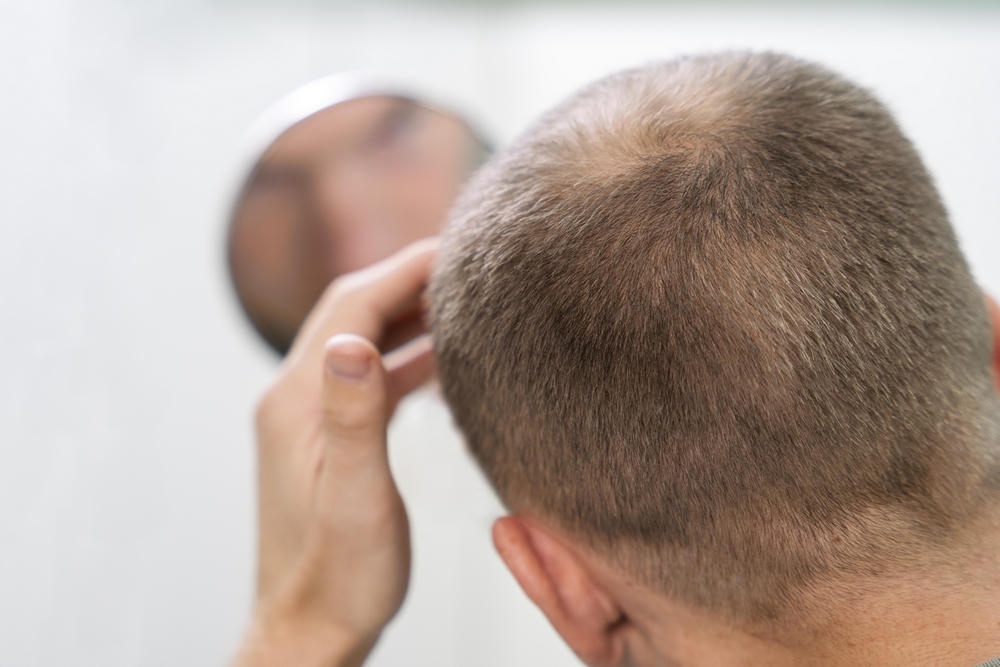In my practice, I see patients every day struggling with the usual suspects of hair loss — androgenetic alopecia or telogen effluvium. These are by far the most common causes.
However, there’s another, far less frequent condition that raises real concern because of its potential severity: Lichen Planopilaris (LPP) — also known as lymphocytic cicatricial alopecia or fibrosing alopecia.
Today, I want to tell you everything you need to know about LPP — what it is, how to recognize it, and what treatments are available if you’re dealing with it.
Tabla de Contenidos
What Is Lichen Planopilaris?
Lichen Planopilaris (or Lichen Planus Pilaris) is an autoimmune disease in which the body’s own T cells mistakenly attack the scalp.
Think of it like this: your immune system, which is supposed to protect you from viruses and bacteria, gets confused and begins attacking your hair follicles instead.
LPP is a type of scarring alopecia, which means that the immune attack not only causes inflammation but also destroys the follicles and replaces them with fibrous tissue — in other words, scars.
The most concerning part is that once scarring occurs, hair in that area will not grow back.
What Causes Lichen Planopilaris?
Like many autoimmune diseases, the exact cause of LPP remains unclear. We do know that there’s often a genetic predisposition, and that certain environmental factors or stress can trigger the immune response.
Some associated risk factors include:
- Genetic predisposition to autoimmune conditions
- Previous hepatitis C infection
- Allergic reactions
- Exposure to substances like gold, arsenic, or chloroquine
- Use of medications such as antibiotics, quinacrine, quinine, or phenothiazines
- Emotional or environmental stress
How Common Is It?
While Lichen Planopilaris is the most common cause of scarring alopecia, it still accounts for only about 1% of all hair loss cases.
It can affect people of any age but is most frequently seen in women between 40 and 60 years old. It isn’t contagious and has nothing to do with hygiene — it’s an internal immune malfunction.
It’s also worth noting that some patients with scalp Lichen Planus may develop lesions on other parts of the body, such as the skin or mucous membranes.
Symptoms: Red Flags You Shouldn’t Ignore
In most cases of LPP, patients come to Hairfix with symptoms that go beyond hair loss, such as:
- Itching and burning on the scalp: The most common and often the most intense symptom.
- Redness and inflammation: A reddish or purplish halo may appear around follicles, sometimes with small bumps.
- Pain or tenderness: The scalp may feel sore or sensitive to touch.
- Patchy hair loss: Usually irregular, with red borders and smooth, shiny areas in the center (the scarring zones).
- Loss of follicular openings: In scarred areas, you can see that the tiny holes where hair should emerge are gone.
Types of Lichen Planopilaris Seen in Practice
There are three main forms of LPP:
- Classic Lichen Planopilaris: The most common type, characterized by scattered bald patches across the scalp.
- Frontal Fibrosing Alopecia (FFA): A variant that’s been increasing in frequency, possibly due to hormonal or environmental factors. It causes a progressive, scarring recession of the frontal hairline and temples. Patients often also lose eyebrow and eyelash hair — a very distinctive sign.
- Lassueur-Graham-Little-Piccardi Syndrome: The rarest of the three. It combines scarring alopecia of the scalp with hair loss in other areas such as the armpits or groin, and sometimes small rough bumps around hair follicles.
Diagnosis: Why Early Consultation Matters
Because LPP is an autoimmune disease, it can affect not only your scalp but also your overall well-being. If it isn’t detected and treated in time, it can cause irreversible scalp damage and impact your quality of life.
At Hairfix, our diagnostic process is thorough and includes:
- Detailed medical history: We’ll talk about your symptoms — how long you’ve had itching or burning, whether your hairline has receded, and whether other areas like nails, mouth, or body hair are affected. This conversation helps narrow down the diagnosis.
- Visual examination: A close inspection of your scalp to identify redness, shiny areas, or scarring.
- Digital trichoscopy: Using a high-resolution dermatoscope, I’ll look for key signs such as perifollicular redness, scaling, and — most importantly — the absence of follicular openings.
- Scalp biopsy: This is the gold standard for diagnosis. We take a small sample from an inflamed area to confirm the presence of inflammatory cells (lymphocytes) attacking the follicles, as well as fibrosis (scarring).

Treatment Options for Lichen Planopilaris
Let me be clear: like most autoimmune diseases, LPP has no definitive cure. The main goal of treatment is to stop inflammation and prevent further follicle destruction. Once a follicle has scarred, it cannot regrow — but we can protect the healthy ones that remain.
Treatment options include:
- Topical or intralesional corticosteroids: These are the first line of treatment. I either inject corticosteroids or prescribe medicated creams to reduce inflammation and relieve burning or itching.
- Oral immunosuppressants: For more extensive or resistant cases, I may prescribe medications that help regulate the immune system and prevent it from attacking hair follicles.
Daily Care Tips for Patients with Lichen Planopilaris
Proper daily care is essential, as the scalp becomes much more sensitive and reactive. Here’s what I usually recommend to my patients:
- Use gentle, hypoallergenic hair products. Inflamed scalps can react to ingredients like alcohol, parabens, essential oils, or fragrances. Stick to the products I prescribe and avoid substitutions without supervision.
- Protect your scalp from the sun. Sun exposure can worsen inflammation, so wear hats, caps, or scarves when outdoors.
- Avoid harsh chemicals. Don’t use dyes or chemical straighteners, as they can irritate your scalp.
- Keep your scalp clean. Washing daily with lukewarm or cool water helps relieve discomfort and prevent infection.
- Avoid scratching. Scratching can worsen inflammation, lead to more hair loss, and cause infection. Use a cool compress or oatmeal bath for relief.
- Manage stress. I know it’s easier said than done, but stress is a major trigger for flare-ups. Practices like meditation, yoga, or exercise can make a big difference.
Even with LPP, you can enjoy a good quality of life — consistency and communication with your doctor are key.
Can Lichen Planopilaris Be Prevented?
Unfortunately, there’s no known way to prevent it. The most important thing is not to ignore your symptoms and to seek medical attention as soon as possible to prevent scarring and permanent hair loss.
Can You Have a Hair Transplant If You Have Lichen Planopilaris?
This is one of the most common questions I receive. From my experience, the answer is yes, but under strict conditions.
A hair transplant can only be considered when the disease has been in complete remission — meaning no inflammation, redness, or itching — for at least 1 to 2 years.
Performing a transplant while the condition is active would be a mistake because the immune system would attack and destroy the newly transplanted follicles, resulting in wasted time and money.
My top priority is always the health of the scalp, because that’s what ensures long-lasting and natural results.
Your Peace of Mind Comes First
Lichen Planopilaris is a rare but serious cause of hair loss that requires precise diagnosis and treatment to prevent progression and permanent damage.
If you or someone close to you is experiencing persistent itching, burning, or painful areas of hair loss with redness or shiny, scarred patches, don’t wait — time is critical in managing LPP.
At Hairfix Hair Restoration Clinic, we have a team of trichology specialists and advanced diagnostic tools to confirm the disease early.
Our mission is to stop the progression of alopecia, preserve your remaining hair, and help you regain your confidence.
We’re Here to Help You
Remember: when it comes to autoimmune scalp conditions like LPP, timing and precision make all the difference.
Delaying diagnosis can lead to irreversible scarring — but detecting it early gives us the best chance to protect your follicles and preserve your hair.
At Hairfix, we don’t just treat the symptoms — we address the root cause, guide you through every step of your recovery, and provide the emotional support you need. Hair loss is deeply personal, and we understand how it affects your confidence, self-image, and overall well-being.
That’s why our approach combines medical expertise with empathy. From your first consultation, we’ll help you understand exactly what’s happening with your scalp, what treatments are available, and how to care for yourself daily.
Our team of trichologists and dermatologists will be with you every step of the way — from diagnosis and treatment to scalp care guidance and, when possible, planning a future hair transplant.
If you suspect you may have Lichen Planopilaris, don’t wait. The sooner we act, the more hair we can save — and the better your long-term results will be.
Schedule your consultation at Hairfix today
Let us help you protect your scalp, restore your confidence, and feel like yourself again.
Your hair health matters — and at Hairfix, we’re here to take care of it with science, precision, and heart.
Sources





